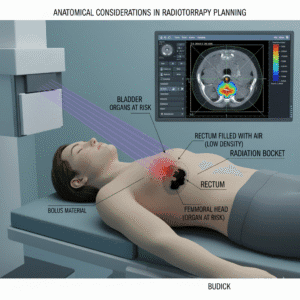
PICC in Chemotherapy
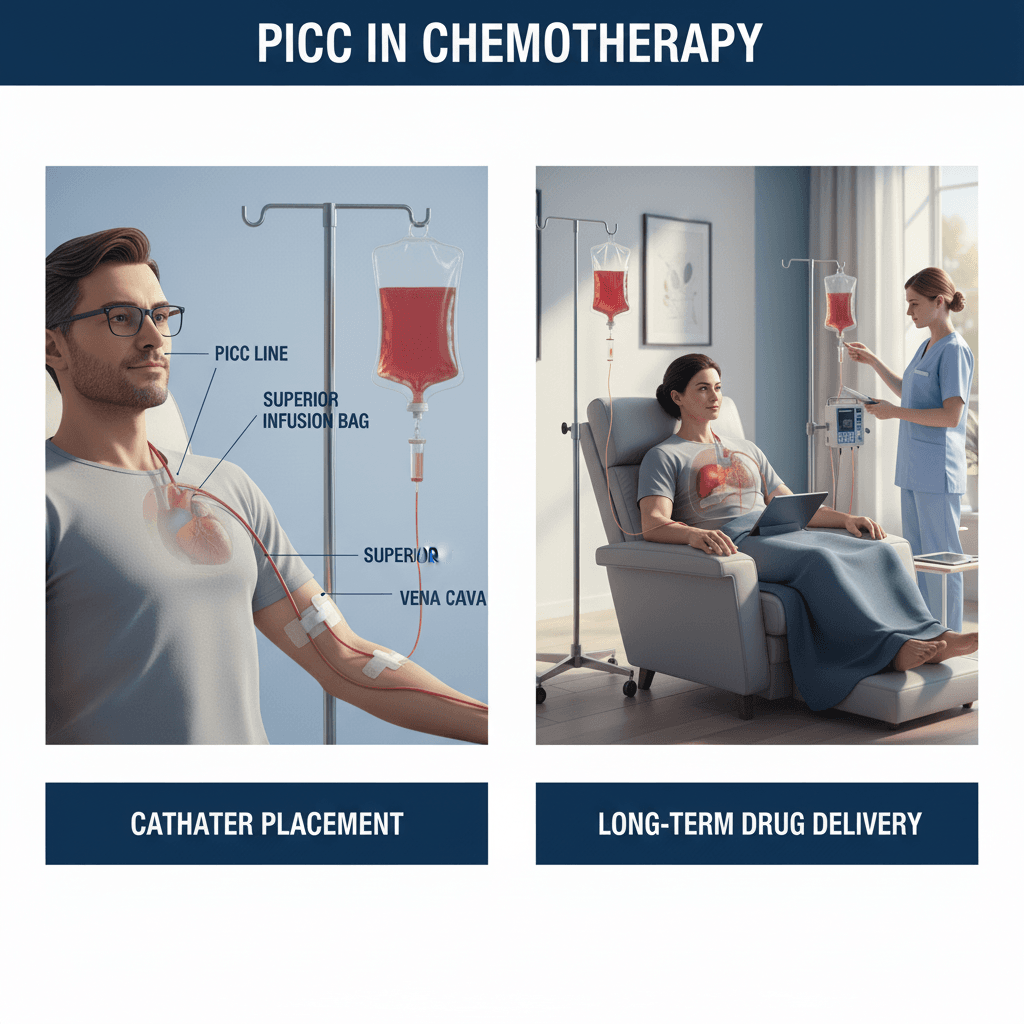
Q1: What is a PICC Line?
A PICC line, or Peripherally Inserted Central Catheter, is a long, thin tube that is inserted into a vein in the arm and threaded through to a large vein near the heart. It is used in cancer treatment to provide easy and reliable access to the bloodstream for delivering chemotherapy, medications, fluids, and for drawing blood. A PICC line can stay in place for weeks or months, making it convenient for long-term treatment.
Q2: How does a PICC Line work in cancer treatment?
The PICC line is inserted into a vein in the upper arm and then guided through the vein until the tip of the catheter reaches a large vein near the heart. Once in place, the PICC line allows healthcare providers to administer chemotherapy and other treatments directly into the bloodstream. It also makes it easier to draw blood for tests without repeated needle sticks, reducing discomfort and stress for patients undergoing frequent treatments.
Q3: Why is a PICC Line used in cancer treatment?
A PICC line is used in cancer treatment for several reasons:
• Convenience: It provides a stable and reliable way to deliver treatments and draw blood over an extended period.
• Reduced discomfort: A PICC line eliminates the need for frequent needle sticks in the veins of the arms or hands, making treatment less painful.
• Protects veins: The line allows for the administration of chemotherapy drugs that can be harsh on smaller veins, reducing the risk of vein irritation or damage.
• Long-term use: A PICC line can remain in place for weeks to months, making it suitable for patients requiring prolonged treatment.
Q4: How is a PICC Line inserted?
A: Inserting a PICC line is a relatively simple procedure that usually takes place in a hospital or outpatient clinic:
1. Preparation: The patient’s arm is cleaned and sterilized, and a local anesthetic is applied to numb the insertion area.
2. Insertion: A small needle is used to access a vein in the upper arm. A guide wire is inserted through the needle, and the catheter is then threaded through the vein until it reaches a large vein near the heart.
3. Confirmation: The position of the PICC line is confirmed with an X-ray or ultrasound to ensure it is correctly placed.
4. Dressing: The insertion site is covered with a sterile dressing to keep it clean and protected.
The entire procedure typically takes about 30 minutes to an hour, and most patients can go home shortly afterward.
Q5: What should I expect after getting a PICC Line?
A: After the PICC line is inserted, you may experience some mild discomfort or bruising at the insertion site, which usually resolves within a few days. It’s important to keep the PICC line clean and dry, and to follow your healthcare provider’s instructions for care. The line will need to be flushed regularly to prevent clots, and the dressing should be changed as directed to reduce the risk of infection.
Q6: How is the PICC Line used during treatment?
A: During treatment, the PICC line is accessed by a healthcare provider using a special syringe or IV tubing. The line can be used to deliver chemotherapy, antibiotics, fluids, or nutrition directly into the bloodstream. It can also be used to draw blood for tests without needing to insert a needle into a vein each time.
Q7: How long can a PICC Line stay in place?
A: A PICC line can remain in place for weeks to several months, depending on the length of your treatment. It can be used as long as it remains free of complications, such as infection or clotting. If the line is no longer needed or if complications arise, it can be removed by a healthcare provider.
Q8: What are the potential risks or complications of a PICC Line?
A: While PICC lines are generally safe, there are some potential risks and complications, including:
• Infection: The insertion site or the line itself can become infected, which may require treatment with antibiotics or removal of the line.
• Blood clots: Clots can form in or around the catheter, which may need to be treated with medication or by flushing the line.
• Line dislodgement: The PICC line can become dislodged or move out of position, requiring adjustment or replacement.
• Phlebitis: Inflammation of the vein where the PICC line is inserted, which can cause pain, redness, and swelling.
Your healthcare team will provide instructions on how to care for your PICC line to minimize these risks.
Q9: How do I care for my PICC Line?
Caring for a PICC line involves keeping the insertion site clean and dry, flushing the line regularly to prevent clots, and changing the dressing as instructed by your healthcare provider. You should also be aware of signs of infection, such as redness, swelling, or fever, and contact your healthcare provider if you notice any of these symptoms. It’s important to avoid heavy lifting or activities that could pull on the line, and to protect the area from water during bathing.
If you have more questions about using a PICC line in your cancer treatment or need help understanding how it might fit into your care plan, talk to your healthcare provider. They can provide detailed information and guide you through the process of using and caring for a PICC line.
Related Post

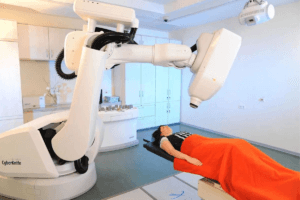
CyberKnife
August 6, 2024
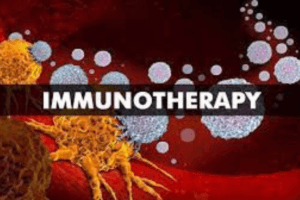
Immunotherapy
August 7, 2024
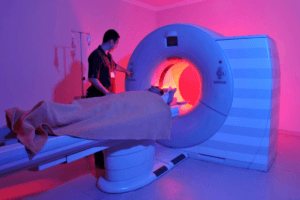
MRI Linac
August 7, 2024

Gamma Knife
August 7, 2024
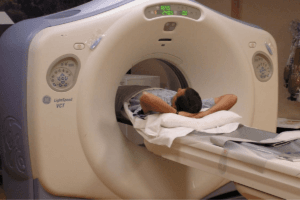
Cancer Screening
August 22, 2024
Gallery
Click below to book a clinic appointment
Ask More Questions Send Query On Email



